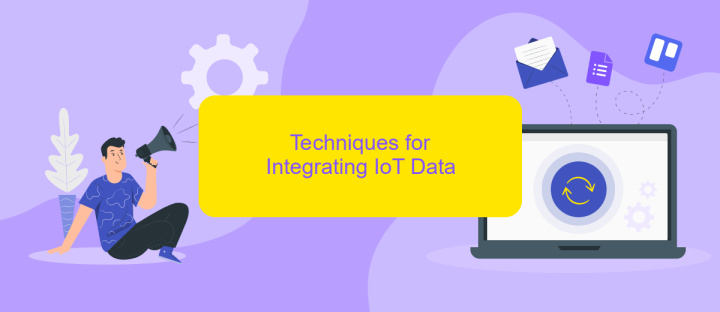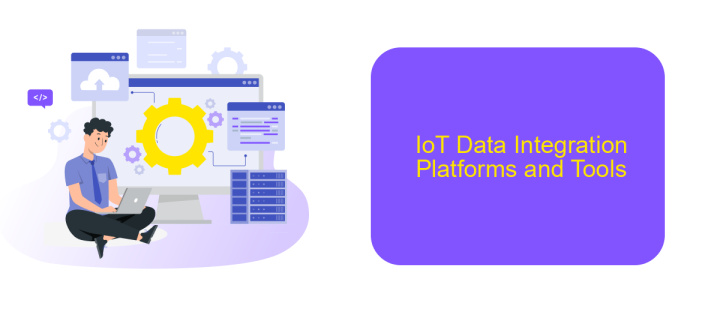IoT Data Integration
The integration of IoT data is revolutionizing industries by enabling seamless communication between devices and systems. With the exponential growth of connected devices, the ability to efficiently collect, process, and analyze data is crucial. This article explores the key challenges and solutions in IoT data integration, highlighting its impact on improving operational efficiency, decision-making, and innovation across various sectors.
Introduction to IoT Data Integration
The integration of IoT data is a critical component in harnessing the full potential of Internet of Things (IoT) ecosystems. As devices generate vast amounts of data, the need for seamless integration and analysis becomes paramount to derive actionable insights and drive informed decision-making. Efficient IoT data integration can transform raw data into valuable information, enhancing operational efficiency and innovation.
- Real-time data processing and analytics
- Interoperability between diverse IoT devices
- Scalability to handle growing data volumes
- Enhanced security and data privacy
- Automated data workflows and integrations
Services like ApiX-Drive facilitate IoT data integration by providing robust tools for automating data workflows and ensuring seamless connectivity between various IoT devices and platforms. With ApiX-Drive, businesses can streamline their data processes, enabling real-time data synchronization and analysis, ultimately leading to more efficient and innovative operations.
Challenges and Opportunities of IoT Data Integration

Integrating IoT data presents a range of challenges, including data standardization, security concerns, and handling vast amounts of data in real-time. The diversity of devices and protocols makes it difficult to create a unified data format, leading to compatibility issues. Security is another critical challenge, as IoT devices are often vulnerable to cyber-attacks, necessitating robust encryption and authentication mechanisms. Moreover, the sheer volume of data generated by IoT devices requires efficient data processing and storage solutions to ensure timely and accurate analytics.
Despite these challenges, IoT data integration also offers significant opportunities. Enhanced data analytics can lead to improved decision-making and operational efficiency. Tools like ApiX-Drive can simplify the integration process by offering seamless connectivity between different IoT devices and data platforms, reducing the complexity of data standardization and integration. Additionally, advancements in cloud computing and edge computing provide scalable solutions for real-time data processing and storage, enabling businesses to harness the full potential of IoT data. By addressing these challenges, organizations can unlock new insights and drive innovation.
Techniques for Integrating IoT Data

Integrating IoT data efficiently is crucial for leveraging the full potential of connected devices. Several techniques can be employed to ensure seamless integration and data flow across systems.
- API Integration: Using APIs to connect IoT devices with applications and platforms allows for real-time data exchange.
- Middleware Solutions: Middleware acts as a bridge between IoT devices and enterprise systems, facilitating smooth communication and data processing.
- Data Normalization: Standardizing data formats from various IoT devices ensures consistency and compatibility across different systems.
- Cloud Services: Utilizing cloud platforms for data storage and processing provides scalability and flexibility in managing IoT data.
- Integration Platforms: Tools like ApiX-Drive offer automated integration solutions, simplifying the process of connecting IoT data with various applications and services.
By employing these techniques, organizations can effectively integrate IoT data into their existing systems, enhancing operational efficiency and enabling better decision-making. The use of integration platforms like ApiX-Drive can significantly reduce the complexity and time required for setting up and maintaining these integrations.
IoT Data Integration Platforms and Tools

Integrating IoT data is crucial for leveraging the full potential of connected devices. IoT data integration platforms and tools streamline the process of collecting, processing, and analyzing data from various IoT devices, enabling businesses to make data-driven decisions efficiently.
These platforms offer a range of functionalities, including real-time data processing, data normalization, and seamless integration with existing IT infrastructure. By utilizing these tools, organizations can ensure that their IoT data is accurate, consistent, and readily available for analysis.
- ApiX-Drive: A versatile integration service that automates data transfer between IoT devices and business applications.
- Microsoft Azure IoT Hub: A comprehensive platform for managing and scaling IoT applications.
- IBM Watson IoT Platform: A powerful tool for real-time data analysis and device management.
- Google Cloud IoT: Offers robust data processing and machine learning capabilities for IoT data.
Choosing the right IoT data integration platform depends on the specific needs of your organization. Whether you require real-time analytics, automated workflows, or seamless integration with other business systems, these tools provide the necessary infrastructure to optimize your IoT data strategy.
Applications and Benefits of IoT Data Integration
IoT data integration plays a crucial role in enhancing operational efficiency and decision-making across various industries. By seamlessly connecting IoT devices and systems, businesses can gather real-time data, enabling predictive maintenance, optimized resource management, and improved customer experiences. For example, in manufacturing, integrated IoT data can monitor equipment health, predict failures, and schedule timely maintenance, reducing downtime and operational costs.
Moreover, platforms like ApiX-Drive facilitate the integration process by providing user-friendly tools to connect various IoT devices and applications without extensive coding. This not only accelerates the deployment of IoT solutions but also ensures data consistency and reliability. The benefits extend to smart cities, where integrated IoT data can enhance traffic management, energy usage, and public safety. Overall, IoT data integration empowers organizations to harness the full potential of their IoT ecosystems, driving innovation and competitive advantage.
FAQ
What is IoT data integration?
Why is IoT data integration important?
What challenges are associated with IoT data integration?
How can businesses simplify IoT data integration?
What are some best practices for IoT data integration?
Apix-Drive will help optimize business processes, save you from a lot of routine tasks and unnecessary costs for automation, attracting additional specialists. Try setting up a free test connection with ApiX-Drive and see for yourself. Now you have to think about where to invest the freed time and money!

